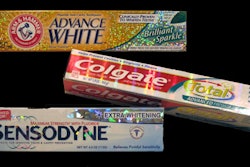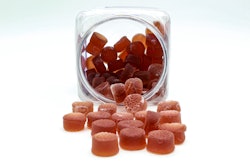
It's always my goal to make sure readers are armed with proper cocktail-party conversation, so today we turn to what you might say about the U.S. FDA's recent trends in enforcement. Tell people FDA is tougher, doing more, and you can't go wrong. Beyond that you might have to mumble and claim to need another beer.
That's because, when trying to measure what the FDA's up to, looking at the agency's statistics on enforcement actions can be enlightening but also ambiguous. Because there are some things you can tell by looking at the numbers, while some things are uncertain.
Part of the problem is that the FDA has seen fit to publish new statistics that aren't the same as the ones they tracked in past years. They used to report how many inspections they conducted, but didn't in the new report. They also didn't include the number of FDA inspection reports called Form 483's in the most recent report.
FDA's biggest powers of enforcement--seizures, injunctions, and criminal prosecution--are all judicial remedies that take a lot of resources to use, so the agency typically threatens them much more than it uses them. As a result, year after year, the numbers on those are in the handfuls range, and this year is no different: in fiscal 2010 FDA conducted 10 seizures, 17 injunctions, up from 6 and 11 respectively in fiscal 2009, and 8 and 5 in 2008.
There were 3,799 “recall events” in Fiscal 2010, way up from 2,721 in 2008, though that's a different figure than the number of recalled products, which the FDA notes extensively in the 2010 report. The agency says there were 9,361 recalled products in fiscal 2010, a number that's been steadily climbing since 2006.
This is perhaps the best example of the ambiguity of these statistics. Since virtually all recalls are voluntary by companies, when the numbers of recalled products are up, does an increase mean more companies are acting responsibly, more are messing up more often, or both? It's not clear.
And does it mean FDA is putting more pressure on companies to act, sometimes unjustifiably, in the face of perceived product problems? One way you might be able to tell whether that's so is if FDA was inspecting facilities more often, thereby increasing the number of situations in which they discover what they think are problems and pressure companies to remedy them as a result. But because FDA didn't report its number of inspections this year, you can't tell.
Among the things you can tell is that FDA's device, food, and biologics folks are the busiest with recalls among the FDA's different centers, much more than its drug, veterinary, and tobacco staffs.
In the absence of data on the number of FDA inspections, FDA's Warning Letters stats are a good indicator of toughness. Those were up to 673 in 2010, up from 445 in fiscal 2008 and 474 in fiscal 2009.
Warning Letters are one of the most common enforcement actions FDA takes, often as a follow-up to inspections where FDA found what they think are violations in a food, drug, device, cosmetic, or other type of plant. Warning Letters tell the company to shape up or face seizures or injunctions, or even prosecutions. Most of the time they cause the company to change and no further FDA action is taken. And the devices and food folks had among the highest numbers of Warning Letters, too, as did FDA's drug center.
-Eric F. Greenberg, Attorney-At-Law, Eric F. Greenberg, PC
That's because, when trying to measure what the FDA's up to, looking at the agency's statistics on enforcement actions can be enlightening but also ambiguous. Because there are some things you can tell by looking at the numbers, while some things are uncertain.
Part of the problem is that the FDA has seen fit to publish new statistics that aren't the same as the ones they tracked in past years. They used to report how many inspections they conducted, but didn't in the new report. They also didn't include the number of FDA inspection reports called Form 483's in the most recent report.
FDA's biggest powers of enforcement--seizures, injunctions, and criminal prosecution--are all judicial remedies that take a lot of resources to use, so the agency typically threatens them much more than it uses them. As a result, year after year, the numbers on those are in the handfuls range, and this year is no different: in fiscal 2010 FDA conducted 10 seizures, 17 injunctions, up from 6 and 11 respectively in fiscal 2009, and 8 and 5 in 2008.
There were 3,799 “recall events” in Fiscal 2010, way up from 2,721 in 2008, though that's a different figure than the number of recalled products, which the FDA notes extensively in the 2010 report. The agency says there were 9,361 recalled products in fiscal 2010, a number that's been steadily climbing since 2006.
This is perhaps the best example of the ambiguity of these statistics. Since virtually all recalls are voluntary by companies, when the numbers of recalled products are up, does an increase mean more companies are acting responsibly, more are messing up more often, or both? It's not clear.
And does it mean FDA is putting more pressure on companies to act, sometimes unjustifiably, in the face of perceived product problems? One way you might be able to tell whether that's so is if FDA was inspecting facilities more often, thereby increasing the number of situations in which they discover what they think are problems and pressure companies to remedy them as a result. But because FDA didn't report its number of inspections this year, you can't tell.
Among the things you can tell is that FDA's device, food, and biologics folks are the busiest with recalls among the FDA's different centers, much more than its drug, veterinary, and tobacco staffs.
In the absence of data on the number of FDA inspections, FDA's Warning Letters stats are a good indicator of toughness. Those were up to 673 in 2010, up from 445 in fiscal 2008 and 474 in fiscal 2009.
Warning Letters are one of the most common enforcement actions FDA takes, often as a follow-up to inspections where FDA found what they think are violations in a food, drug, device, cosmetic, or other type of plant. Warning Letters tell the company to shape up or face seizures or injunctions, or even prosecutions. Most of the time they cause the company to change and no further FDA action is taken. And the devices and food folks had among the highest numbers of Warning Letters, too, as did FDA's drug center.
-Eric F. Greenberg, Attorney-At-Law, Eric F. Greenberg, PC



















